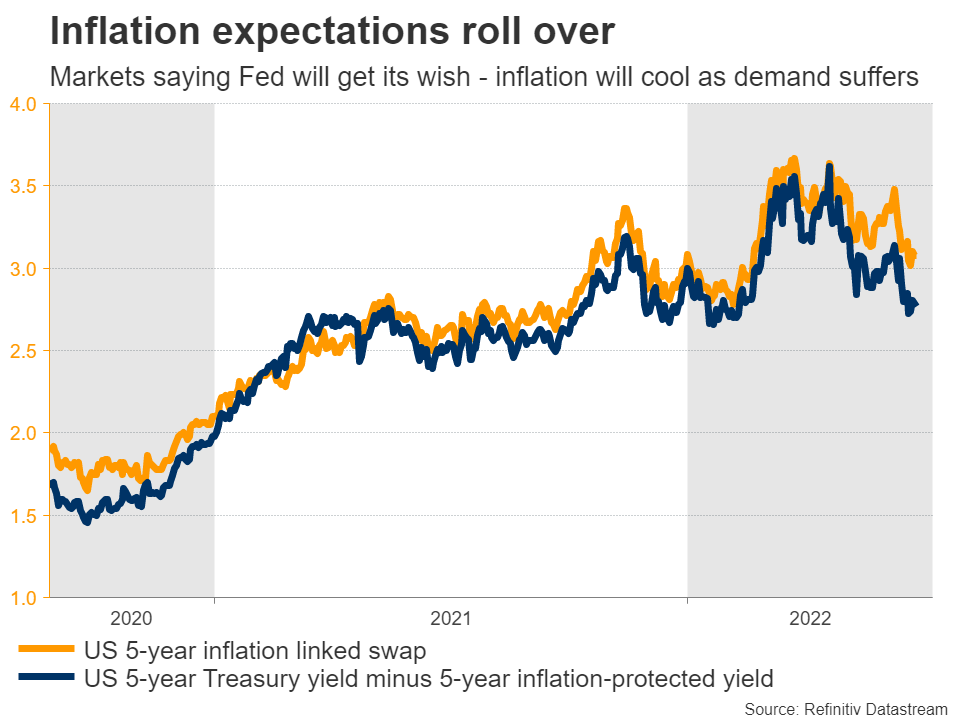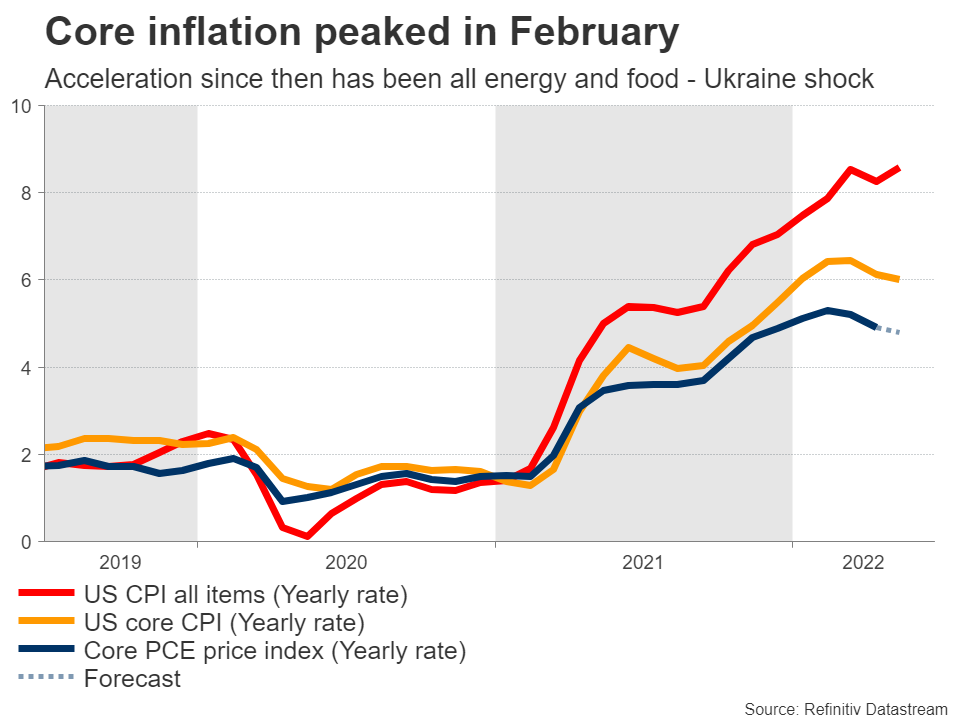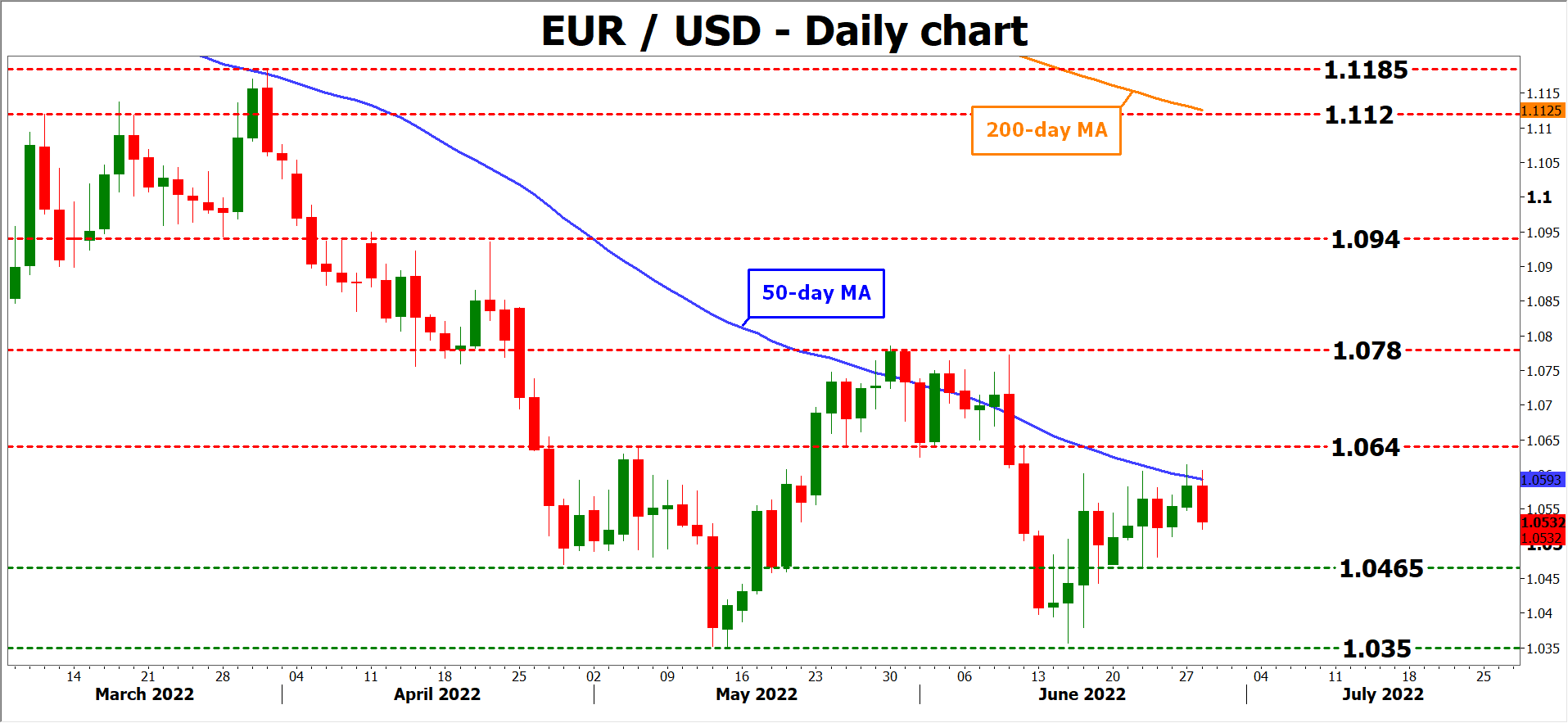Inflation or recession?
The narrative in financial markets has shifted lately. Concerns around inflation running wild have taken a back seat, replaced by worries that economic growth is about to slow down dramatically. The risk of recession is the new public enemy.
Such concerns were reflected in the latest S&P Global PMI surveys, which showed a “remarkable drop in demand for goods and services” alongside a very sharp decline in business confidence. Several major retailers have also been complaining about having inventory they cannot unload, the housing market is feeling the burn of soaring mortgage rates, and hiring has slowed.

Market participants are essentially saying the Fed will get its wish - inflation is going to cool, but only because the economy will struggle.
Upcoming data
Bearing all this in mind, the upcoming batch of data could be crucial as markets grapple with how much the Fed is going to raise interest rates over the coming months. The show will get started on Thursday with the core PCE price index for May, alongside personal consumption and income numbers for the same month.

Then on Friday, the ISM manufacturing index for June will hit the markets. This is likely to attract the most attention, as some of its components like new orders are considered forward-looking indicators of economic activity. If it echoes a similarly gloomy outlook as the other PMI surveys, bets for Fed rate increases could be dialed back further, spelling bad news for the dollar.

On the other hand, a surprisingly strong batch of data could send the pair lower, with the 1.0465 likely to act as an initial support barrier.
No trend reversal yet
In the bigger picture, it is difficult to call for any reversal in the dollar while it is the only major currency that offers both attractive interest rates and safety thanks to its reserve currency status.
That is especially true when other major currencies are battling their own demons. Surging energy prices have devastated both the euro and the yen, by depriving them of their biggest historical advantage - a massive trade surplus. Both the Eurozone and Japan are running large trade deficits now, since they have to pay so much more to import energy products.

As such, the trajectory of oil prices might be the most important determinant for the FX market moving forward. A sustained decline in oil prices could simultaneously revive the euro and yen, and hamstring the dollar since the Fed wouldn’t need to be so aggressive with rate increases.
This is the missing piece for a trend reversal in the FX arena - lower energy prices. Until that happens, the mighty dollar is unlikely to lose its crown.
Trading analysis offered by RobotFX and Flex EA.
Source



Please do not spam; comments and reviews are verified prior to publishing.